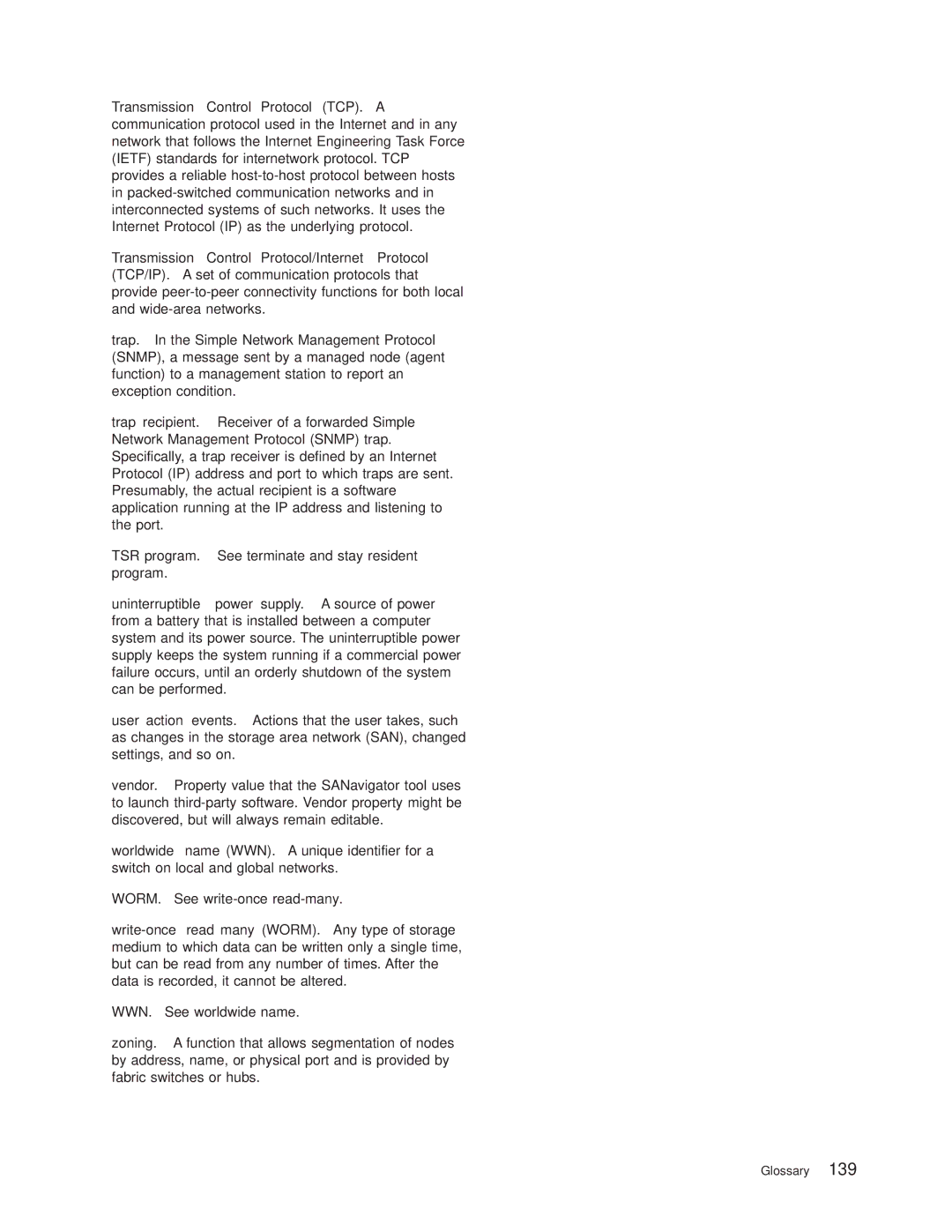Transmission Control Protocol (TCP). A
communication protocol used in the Internet and in any network that follows the Internet Engineering Task Force (IETF) standards for internetwork protocol. TCP provides a reliable
Transmission Control Protocol/Internet Protocol
(TCP/IP). A set of communication protocols that provide
trap. In the Simple Network Management Protocol (SNMP), a message sent by a managed node (agent function) to a management station to report an exception condition.
trap recipient. Receiver of a forwarded Simple Network Management Protocol (SNMP) trap. Specifically, a trap receiver is defined by an Internet Protocol (IP) address and port to which traps are sent. Presumably, the actual recipient is a software application running at the IP address and listening to the port.
TSR program. See terminate and stay resident program.
uninterruptible power supply. A source of power from a battery that is installed between a computer system and its power source. The uninterruptible power supply keeps the system running if a commercial power failure occurs, until an orderly shutdown of the system can be performed.
user action events. Actions that the user takes, such as changes in the storage area network (SAN), changed settings, and so on.
vendor. Property value that the SANavigator tool uses to launch
worldwide name (WWN). A unique identifier for a switch on local and global networks.
WORM. See
WWN. See worldwide name.
zoning. A function that allows segmentation of nodes by address, name, or physical port and is provided by fabric switches or hubs.
Glossary 139
